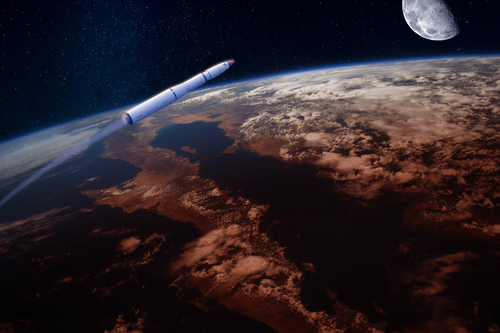
In a recent showcase of military prowess, the Russian Northern Fleet’s Project 22350 frigate Admiral Golovko hit its targets with precision during artillery and surface-to-air missile firings in the Barents Sea.

“The Northern Fleet’s frigate Admiral Golovko has successfully accomplished a series of artillery firings in the Barents Sea as part of scheduled combat training measures,” according to a statement released to state media outlet Tass.

This event signifies a substantial strategic evolution in naval warfare, as Russia pivots from conventional big-gun warships to technologically advanced missile platforms.

The Admiral Golovko frigate, commissioned on December 25, 2023, with President Vladimir Putin in attendance, is outfitted with a bevy of formidable weapons. Its arsenal includes the Kalibr-NK and Oniks cruise missiles, designed for long-range strikes and anti-submarine warfare. Additionally, the vessel has made headlines for its capability to launch Tsirkon hypersonic missiles, a move that amplifies its offensive potential.

These multipurpose frigates, a distinct departure from their Soviet-era counterparts, are transforming into ‘floating missile trucks.’ Future vessels are expected to have their Vertical Launch System (VLS) cells doubled, facilitating an even greater payload of missiles. Apart from these advancements, the frigates possess other significant armaments, including Palash close-in weapons systems and torpedo tubes for anti-torpedo and anti-submarine operations.

With a displacement of 5,400 tons and a crew capacity of 210 sailors, the Admiral Golovko can sustain thirty days at sea, reaching speeds up to 29.5 knots. The advent of this vessel and its sister ships signifies a leap forward in the capabilities of the Russian navy.

The strategic implications of Russia’s hypersonic missile-equipped frigates are not lost on NATO. With the alliance marking its 75th anniversary, a collective urgency has taken hold as it confronts an increasingly adversarial Russia.

The renewed focus on maritime capabilities comes as NATO navies prioritize ship acquisitions and invest in antisubmarine warfare and air-defense capabilities to counter threats like sophisticated submarine fleets and aerial assaults from drones and missiles.

This pivot in naval technology also raises questions about the production capabilities within Russia itself, given the intricate demands and high costs associated with building such advanced military assets.

Experts express skepticism about Russia’s capacity to fulfill the ambitious goals of arming all its frigates and corvettes with Zircon missiles, especially considering the impact of international sanctions on acquiring high-quality components.

Despite these concerns, Russia’s military-industrial complex presses on, with ambitious plans for additional Project 22350 frigates and the modernized Project 22350M.

The Severnaya Verf shipyard is under contract to produce seven more Admiral Gorshkov-class frigates, while Steregushchiy-class corvettes are also slated to be equipped with Zircons.

The developments in Russia’s naval armament come against the backdrop of ongoing conflict in Ukraine, where both countries recently reported an attack on a Russian ship by Ukrainian aircraft in the Black Sea, underscoring the volatile security environment and the critical role of naval power.


Relevant articles:
– Russia’s New Navy Frigates Could Become Hypersonic Nightmare for NATO, The National Interest
– NATO’s Navies at 75: Five Operational Imperatives to Watch, U.S. Naval Institute
– Russian frigate enters service, with plans for hypersonic armaments, Defense News
